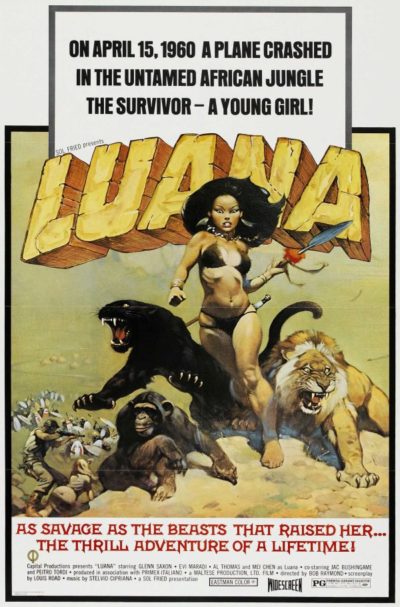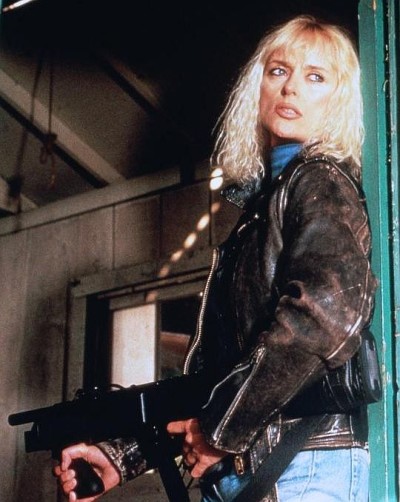Literary rating: ★★★
Kick-butt quotient: ☆☆☆
 There are elements here which reminded me of Children of Men, though this is set further down the road, when civilization has decayed a good deal further. The issue here is slightly different: specifically, a lack of female children, which has triggered a rapid collapse into anarchy for the United States. 25 years later, the National Obstetric Alliance (NOA) seek far and wide for young girls, who are brought to their compound in the Pacific Northwest, to be held until the age of 21 when… Well, their fate gets a bit murky. Approaching that point is Zoey, who has known almost no other life. But after she’s subjected to a harrowing bout of psychological torture in a sensory-deprivation chamber called “the box”, her whole attitude changes, and she’s prepared to go to any lengths to escape, and take the other women with her.
There are elements here which reminded me of Children of Men, though this is set further down the road, when civilization has decayed a good deal further. The issue here is slightly different: specifically, a lack of female children, which has triggered a rapid collapse into anarchy for the United States. 25 years later, the National Obstetric Alliance (NOA) seek far and wide for young girls, who are brought to their compound in the Pacific Northwest, to be held until the age of 21 when… Well, their fate gets a bit murky. Approaching that point is Zoey, who has known almost no other life. But after she’s subjected to a harrowing bout of psychological torture in a sensory-deprivation chamber called “the box”, her whole attitude changes, and she’s prepared to go to any lengths to escape, and take the other women with her.
It’s clear the exact moment and paragraph at which Zoey changes: “A searing desire for vengeance sweeps through her, turning her blood molten hot within her veins and with it the will to exact revenge on those responsible, to destroy what should be obliterated. To reap justice.” Before that, she has been somewhat cowed. A little rebellious, but in small ways, such as reading forbidden literature (The Count of Monte Cristo, perhaps a little too obvious a choice!). Afterward? She becomes a single-minded zealot, intent on the destruction of NOA and those who run it – and all the more interesting for it. But that’s a mission which will open up not only NOA’s darkest secrets, it will also expose how far Zoey is prepared to go in her mission.
As well as Children, there are definitely echoes of A Handmaid’s Tale, with one gender largely reduced to breeding chattel in a theocratic dictatorship [the concept of women as property, is hinted at briefly here with the “Fae Trade”, and appears to be explored further in later volumes]. I’m always down for a good dystopia, and despite the pieces being somewhat familiar, Hart has put them together in an interesting and effective manner, particularly in the second half when Zoey discovers the outside world, and realizes not everyone is like the NOA. My qualms are mostly with the plotting of the first half: if these young women really were the last hope of mankind, wouldn’t they be treated rather better? As in, propped up on couches and fed grapes, rather than kept in conditions resembling a Japanese women-in-prison film.
Still, I can understand why Hart opted for another approach. It would have made for a more ambivalent story-line, rather than NOA and its operatives being the obvious villains of the piece they need to be, and might have robbed Zoey of her moral drive to action. The interesting question – albeit one left unaddressed here – would be whether her lying and putting others in danger, never mind the actual killing, are justified; does the noble end justify her means? Though you could perhaps argue, jeopardizing the future of humanity for your own freedom, is selfish in the extreme. Zoey’s transition certainly makes for one of the more dramatic arcs I’ve read, although her easy adeptness with weapons is somewhat implausible.
Despite these weaknesses, which may seem quite significant, it must be said they didn’t stop me from enjoying the tale as it was told, and there’s still a decent amount to commend this. It’s a nicely self-contained story, yet leaves the door open enough to leave me genuinely interested in reading more. The romantic angles are kept secondary, and there’s a plausibility about the way in which society has fallen apart, that makes this border on disturbing. When the world ends, it may not be with a bang, so much as the sound of us tearing each other apart.
Author: Joe Hart
Publisher: Thomas & Mercer, available through Amazon in both printed and e-book versions.





 There are times when a film doesn’t deliver anything close to what the sleeve promises. This would be one of those times. However, in this case, while disappointed, I can’t claim it was an entire waste of my time. Or, at least, it wasn’t a waste of very
There are times when a film doesn’t deliver anything close to what the sleeve promises. This would be one of those times. However, in this case, while disappointed, I can’t claim it was an entire waste of my time. Or, at least, it wasn’t a waste of very 
 This rattled around in pre-production for a while, originally being called Lady Bloodsport, and with the names linked to it being significantly higher in profile: Maggie Q, Shu Qi and Zhiyi Zhang. The end result here is obviously smaller and cheaper – the fights at its core all take place in the bastion of martial arts, a warehouse – and you can’t help but think, “What if…?” However, it’s still thoroughly enjoyable, despite – or, perhaps because of – feeling like a throwback to straightforward movies such as the original Bloodsport, which helped launch the career of Jean-Claude Van Damme in 1988.
This rattled around in pre-production for a while, originally being called Lady Bloodsport, and with the names linked to it being significantly higher in profile: Maggie Q, Shu Qi and Zhiyi Zhang. The end result here is obviously smaller and cheaper – the fights at its core all take place in the bastion of martial arts, a warehouse – and you can’t help but think, “What if…?” However, it’s still thoroughly enjoyable, despite – or, perhaps because of – feeling like a throwback to straightforward movies such as the original Bloodsport, which helped launch the career of Jean-Claude Van Damme in 1988.













 Despite a broad range of
Despite a broad range of 




